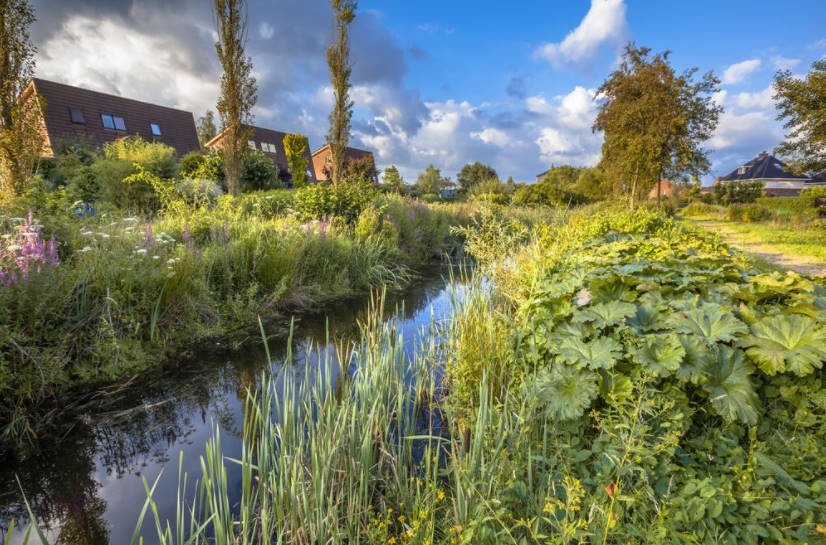
Our ancestors settled in comfortable places, choosing the best conditions for home and garden. Modern summer residents are often deprived of such freedom of choice — many own sites which were cut in territories of the former peat bogs, sandy pits, and even simply in boggy territories.
Therefore, there can be a lot of problems with the land on your site. And one of them-excessive water, which prevents gardening and gardening, flood cellars and cellars, destroys the structure.
Although I must say that not all perceive excess water as evil. There are examples of when flooded crops-a boon: rice fields give higher yields than the dry land, the Aztec chinampas, according to scientists, were highly effective precisely because of the use of optimal agricultural machinery in the floating Islands of reed and firewood, agriculture of the ancient Egyptians was based on the use of fertile silt brought by the floods of the Nile.

Floating gardens of the INTA. Myanmar
And representatives of the INTA (“children of water”) in Myanmar have adapted to live on Inle lake in the literal sense — in houses on stilts. They supply almost the entire population of their country with agricultural products — cabbage and beans, tomatoes and eggplants, peas, herbs and flowers grown in floating gardens, which remain on the place where they left the owner, only thanks to the six stuck to the bottom.
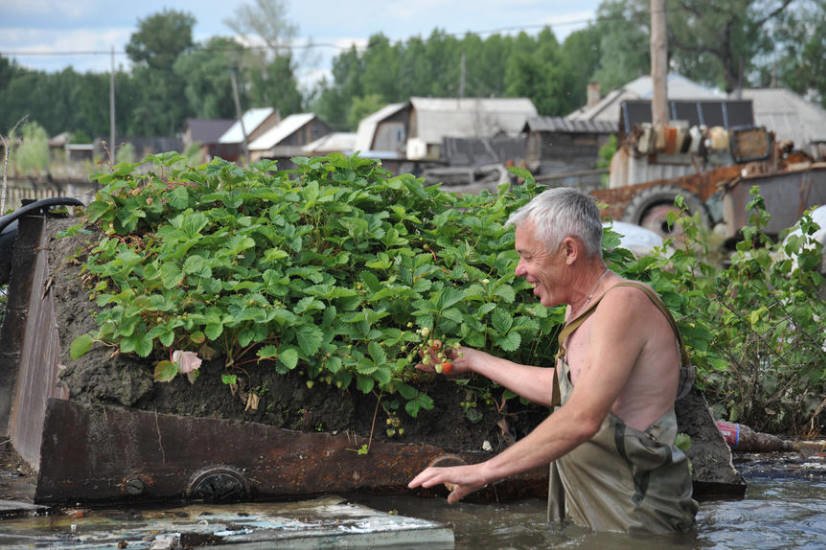
Berry on a flooded garden plot
But after all care of beds in marsh boots is not our method. We are more accustomed to traditional methods of gardening and construction of buildings. Therefore, consider the ways of” struggle for survival ” on their own land, one of which — the device of drainage systems on the site.
Is what we fight for?
Wetlands — are not uncommon, but to worry about it especially not worth it: even the parks of Versailles and Peterhof before were poorly passable swamps. Among the experts there is an opinion that the device drainage systems need practical territory of all construction sites and developed land.
As the Chinese strategist and commander Sun Tzu believed,” to defeat the enemy, you need to know him in person, ” so before starting reclamation activities, we will assess the situation. Excessive water on the site may appear for several reasons:
- flood or flood;
- wetland soil — a high groundwater table;
- weak soil permeability for water.
Methods of struggle also depend on the cause of flooding.
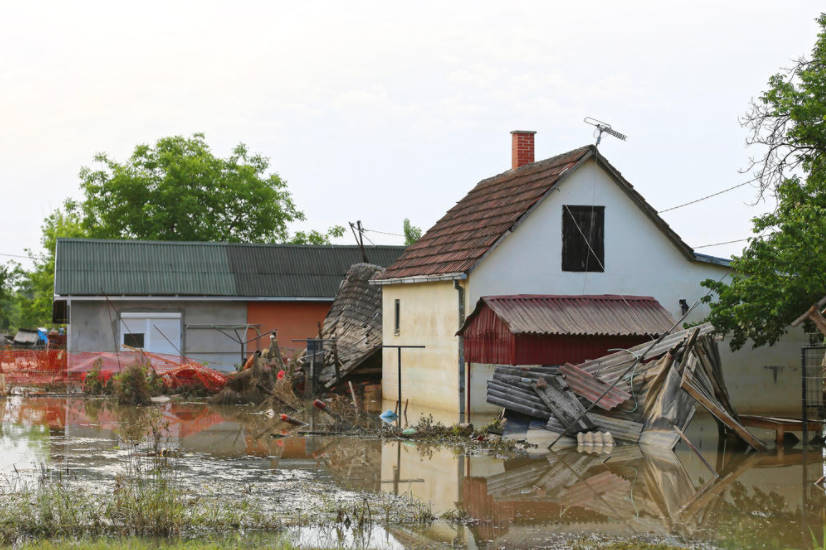
Flood
With flood or flood, as with regular, but short-term phenomena, it is possible to fight the device dams. Naturally, construction of these hydraulic engineering constructions is carried out not in scales of one suburban area.
The problem of wetlands is often tried to solve tons of imported soil, raising the level of the site. But the swamp is just not to take: water, likely to return and it is possible that in the next season. The task of dehumidifying the site requires an integrated approach and bulk soil — only one part of this complex. To start, we should not fight with the investigation and elimination of causes of excess water from the device at the site of drainage.
Puddles on the plot
If the site is in the lowland and the groundwater level is close, the soil is waterlogged. In seasons with abundant rainfall (in spring, when the snow melts, or after heavy rains) on the site appear puddles that do not go away for a long time. The water is because she has nowhere to go: if groundwater table is high, it is in the soil “all booked”. While the water from the surface evaporates, the puddle will be.
The appearance perched due to poor permeability of soil. This phenomenon can be observed in areas with clay or loamy soil: clay particles from the water swell, stick together and form a semblance of what the builders call “clay castle”. While “castle” is closed, the water has nowhere to go, so she is puddles on the surface.
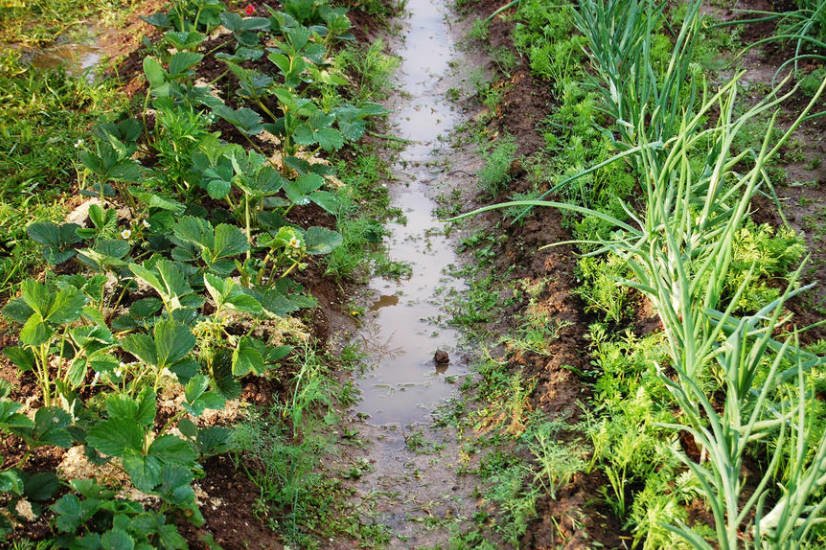
Puddles between the beds
And if the plot located in the valley, nothing but sales, you can not do, the options are to cope with the high groundwater table exists. With a high level of groundwater, it is possible to lower it or divert water. When clay soil you can try to change the composition of the clay more friable. Given the scale of such excavation, this method is relevant only for small flooded areas. Another option is to divert water using a drainage system.
Applied horizontal drainage (in the surface soil levels) or vertical drainage, in which excess water is given the opportunity to get into the deeper layers of the soil, passing the layer of clay, which serves as a temporary waterproof.
What are drainage systems
Drainage is the removal of water from the soil surface or from closely spaced soil waters to improve plant growth conditions or construction safety.
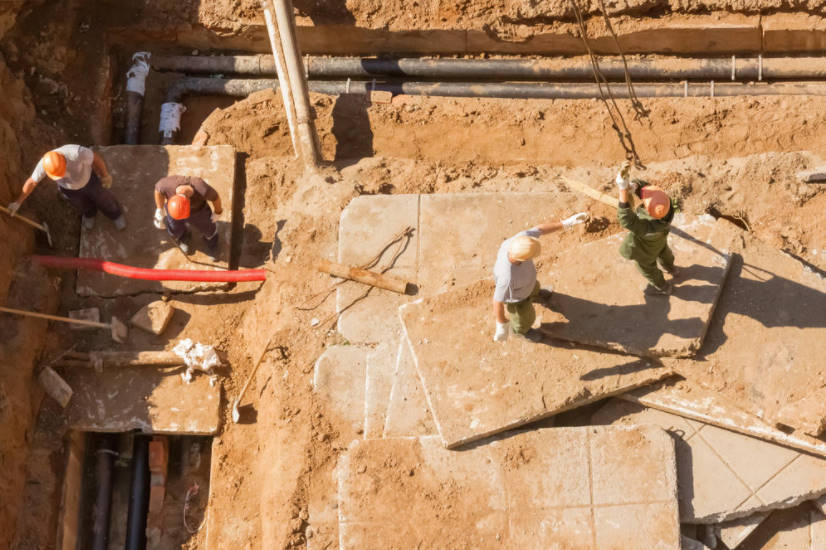
The drainage device during the construction
If the soil is not drained naturally, apply artificial methods — drainage systems. The summer resident should take into account that the drainage system of the site requires a thorough approach at the stage of its design.
What enters the drainage system
Drainage systems are superficial and deep. As a rule, the drainage system is a complex of drainage systems. In case of surface drainage system, gutters or drainage trays serve as drainage channels. In the system of deep drainage drainage drainage is a set of drains located underground.
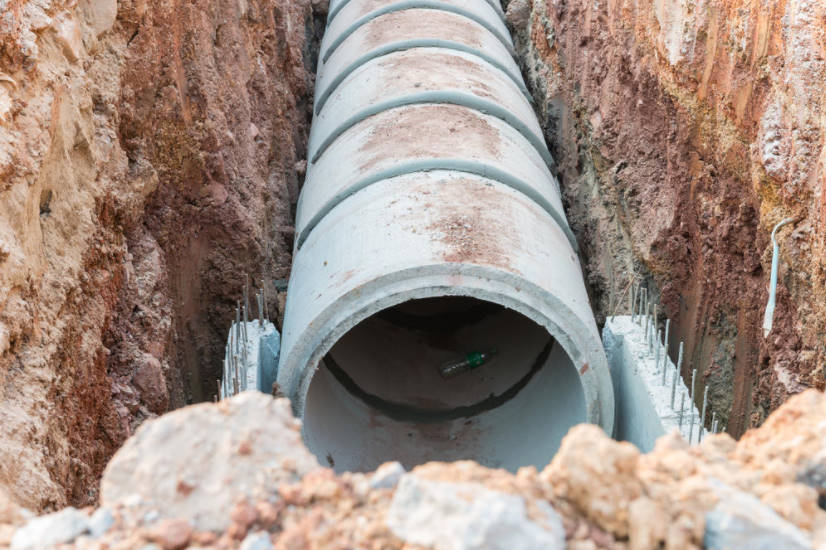
Construction of drainage systems
Water flows into drainage wells or surface water bodies, which collect water from several separate drains or ditches. Then, depending on the volume of incoming water and the composition of the soil, it is either infiltrated into the lower aquifers or, if there is a lot of water and there is no possibility to withdraw it to the soil, the pump is removed from the site, for example, to a nearby water body or storm sewer system.
Drainage pipes — from ceramics, asbestos cement, polyethylene of low or high pressure (HDPE or LDPE), expanded clay or plastic concrete laid in the soil with a bias towards collector drainage wells-are usually understood as drains.
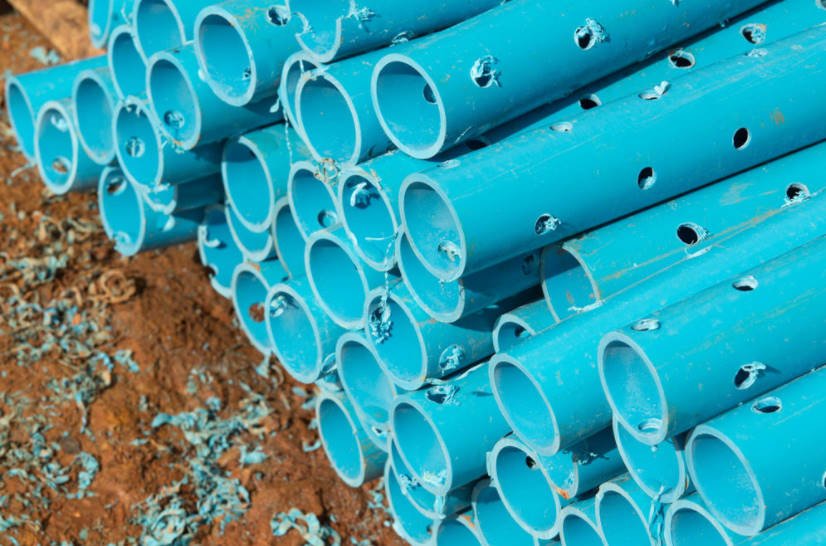
Drainage pipe
Drainage pipes have slits or holes. Ground water seeps into the holes and flows into the drainage well. If pipes are used, they are laid at intervals. Depending on the design of the drainage system, trays can be used instead of pipes.
One of the problems of wastewater disposal-through holes in the pipes is leaking not only water, but also sand, earth, penetrate the roots of plants.
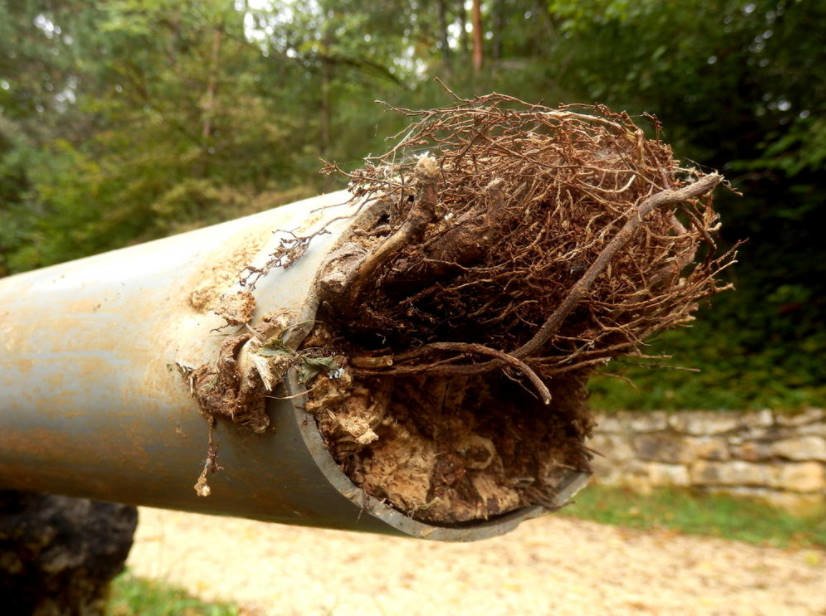
Overgrown drain pipe
Therefore, the drainage system will eventually require repair. In order to prevent or at least delay this necessity, modern drainage pipes are produced in the shell of geotextile — a material that transmits water, but retains soil particles. The filter from geotextile can be applied also at laying of usual drainage pipes.
Also available for sale and drainage pipes that pass water through the holes and through the porous walls.

Drainage pipes with geotextile filter
Except products of factory production, drains can be made and independently.
Choose the drainage system
As mentioned above, drainage can be vertical or horizontal, as well as superficial or deep. But no matter what method of drainage is used, they all act on the same principle: unnecessary water is removed, withdrawn from the place where it interferes, where it will not bother anyone.
At the same time, they try to make maximum use of the ability of water to move independently — flow, using coercion in the form of pumps only in case of extreme need.
The type of drainage system is selected depending on the specific conditions:
- the object of the drainage — does the diversion of excess water building or planting;
- shape and size of the plot-for example, if the plot has a natural slope;
- the composition of the soil and its ability to pass water;
- causes of high humidity-a high level of groundwater (wetland soil) or ;
- annual precipitation;
- cover area-the ability of the soil under the lawn to absorb water is different from the capacity of the asphalted area or paved area;
- availability and type of local Sewerage in the area — the location of the filtration field affects the design of the drainage system.
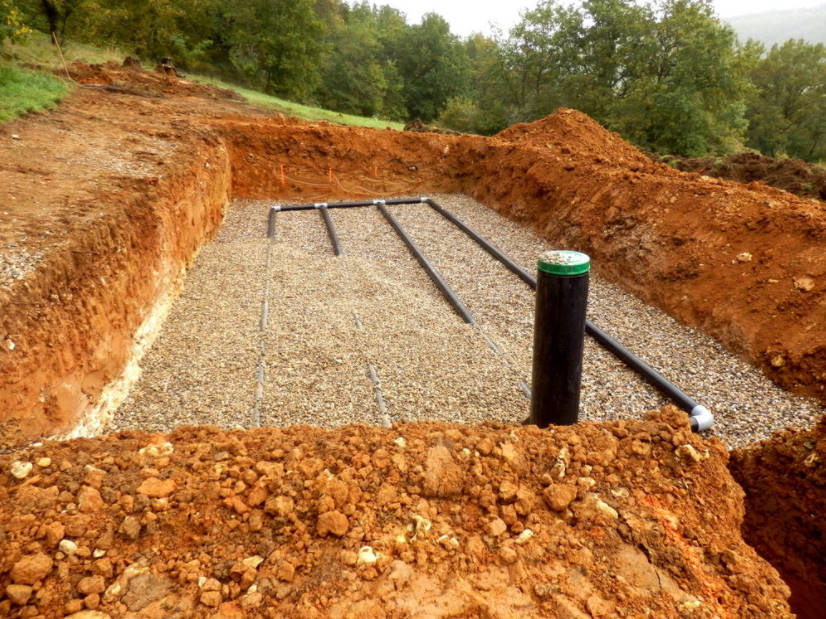
When planning a drainage system, consider the device of Autonomous Sewerage
The most common method is a combined method, which, depending on the conditions, includes different types of drainage.
Surface drainage
Surface drainage-the most common and not too expensive, but at the same time an effective way to divert surface water: the result of heavy rains or spring floods. In most cases, it does not require large-scale excavation, involving large-scale construction equipment: drainage ditches on the site are usually dug shallow.
Doing the ditch with earth walls or decorated with various materials, including ready-made drainage trays. Surface drainage system may include:
- single ditches-for example, along the boundary of the site;
- bypass-on the perimeter of the site;
- ditches-furrows-shallow grooves located on the site, for example, between the beds.
The system of surface drainage include construction, designed to take rainwater and melted water from the buildings, for example, pavement and drainage systems from roofs of buildings.
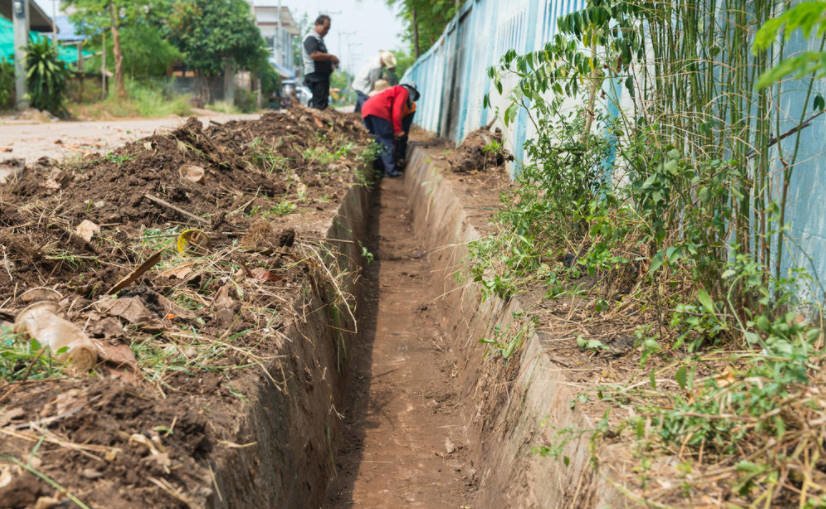
Drainage ditch on the street
As a catchment area use:
- street drainage ditch running along the road;
- storm water drain;
- natural or natural pond located nearby;
- terrain features, for example, ravine.
Surface drainage elements can be open and closed. Surface drainage in most cases can solve the problems of flooding of the site intended for gardening and gardening, but in construction there may be a need for more serious solutions.
Deep drainage
Device for deep drainage drainage elements positioned under the ground. Subsurface drainage is used when the ground water table is less than 2.5 metres from the surface of the soil to lower the groundwater table during the construction of the Foundation. The drainage system project is one of the components of the house construction project. The drainage system is laid on the zero cycle of construction.
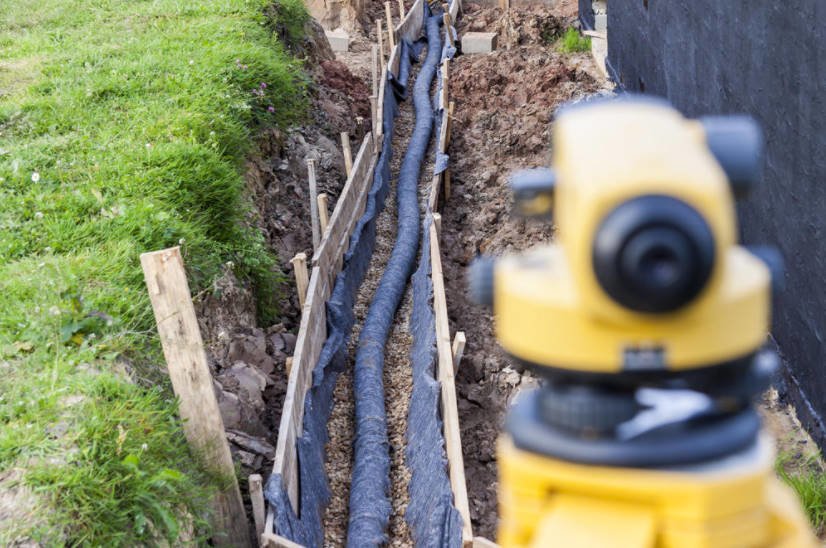
Drainage of the Foundation
The method of drainage of the Foundation is chosen depending on the type of Foundation and the groundwater table. Most often used wall and ring methods. Under difficult geological conditions, reservoir drainage is used at the construction site.
Point drainage
Point drainage collects excess water locally: under irrigation taps, column, gutters with a roof, garden fountains. Typically, point drainage elements complement the linear drainage system.

Grating of point drainage element under drain
Design the installation site point of drainage with the development of the entire drainage system to properly do the drains in the common sewage system.
Vertical drainage
Vertical drainage is one of the elements of the drainage system. May include drainage wells used for collecting water with private drainage pipes or the ground point of the drainage and wells are decorated with drainage pipes and filled with gravel. Vertical drainage allows to “pierce” the local watershed that holds the headwaters: water accumulating in the upper layers of the soil, is able to penetrate deep into.
In some cases, drainage wells are used to lower the EMF, then they are equipped with drainage pumps, pumping water.
The bio-drainage
Ornamental plants on the site-one of the ways of drainage. In problem areas equipped drainage ditches with backfill well filtering water materials-sand, gravel, and planted plants — natural “water pumps”. If necessary, under a drain flowerbed additionally fit drains with drainage to a common drainage system.

Biodegradable planting
The drainage system of the site requires a comprehensive approach, taking into account the geological features, erected buildings, placement of plants (ornamental and vegetable gardens), garden planning.
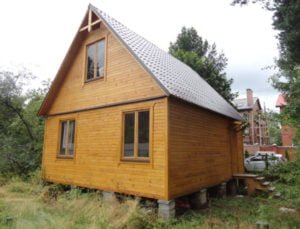


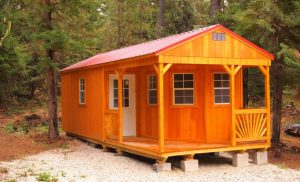
Leave a Reply